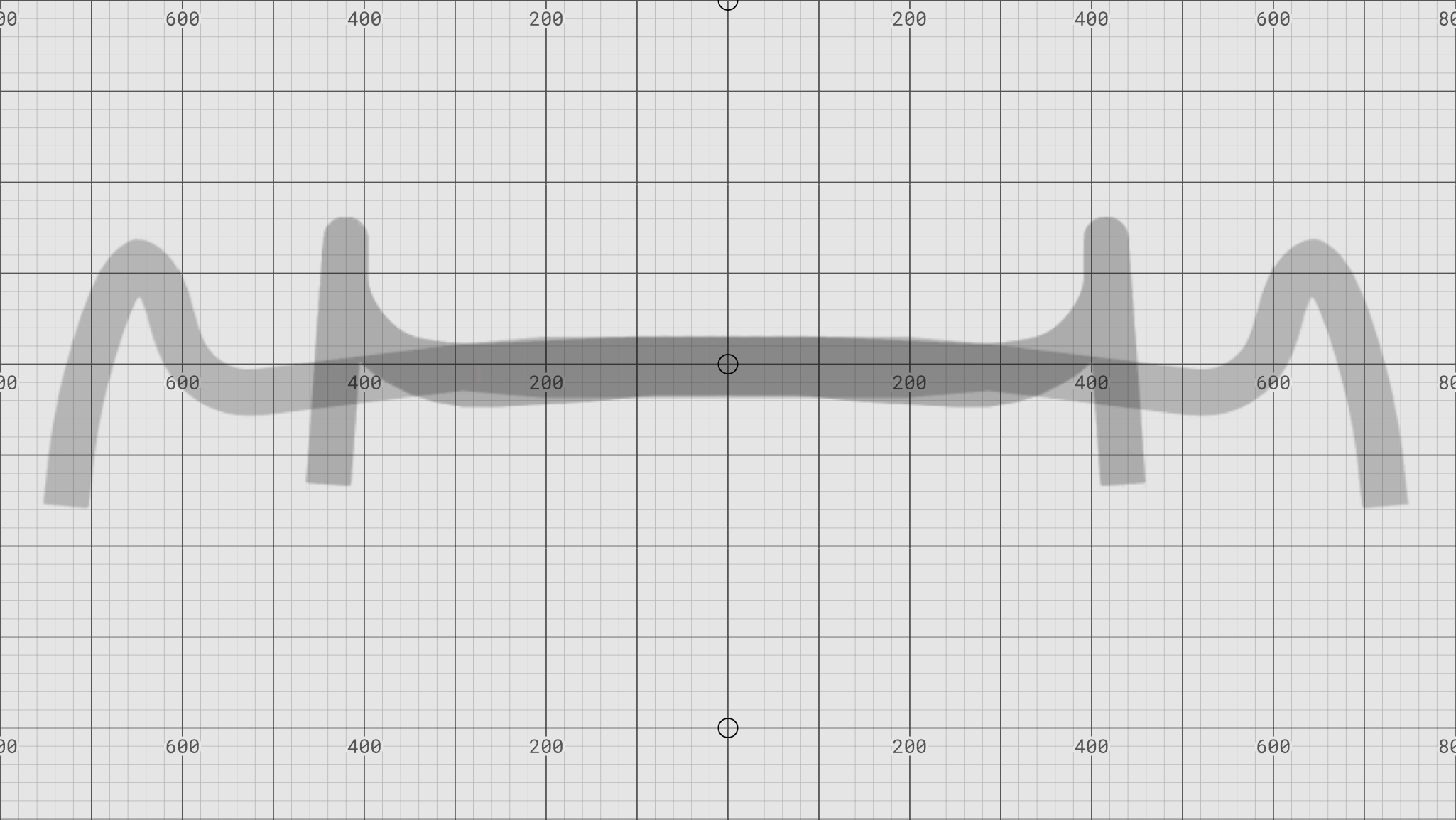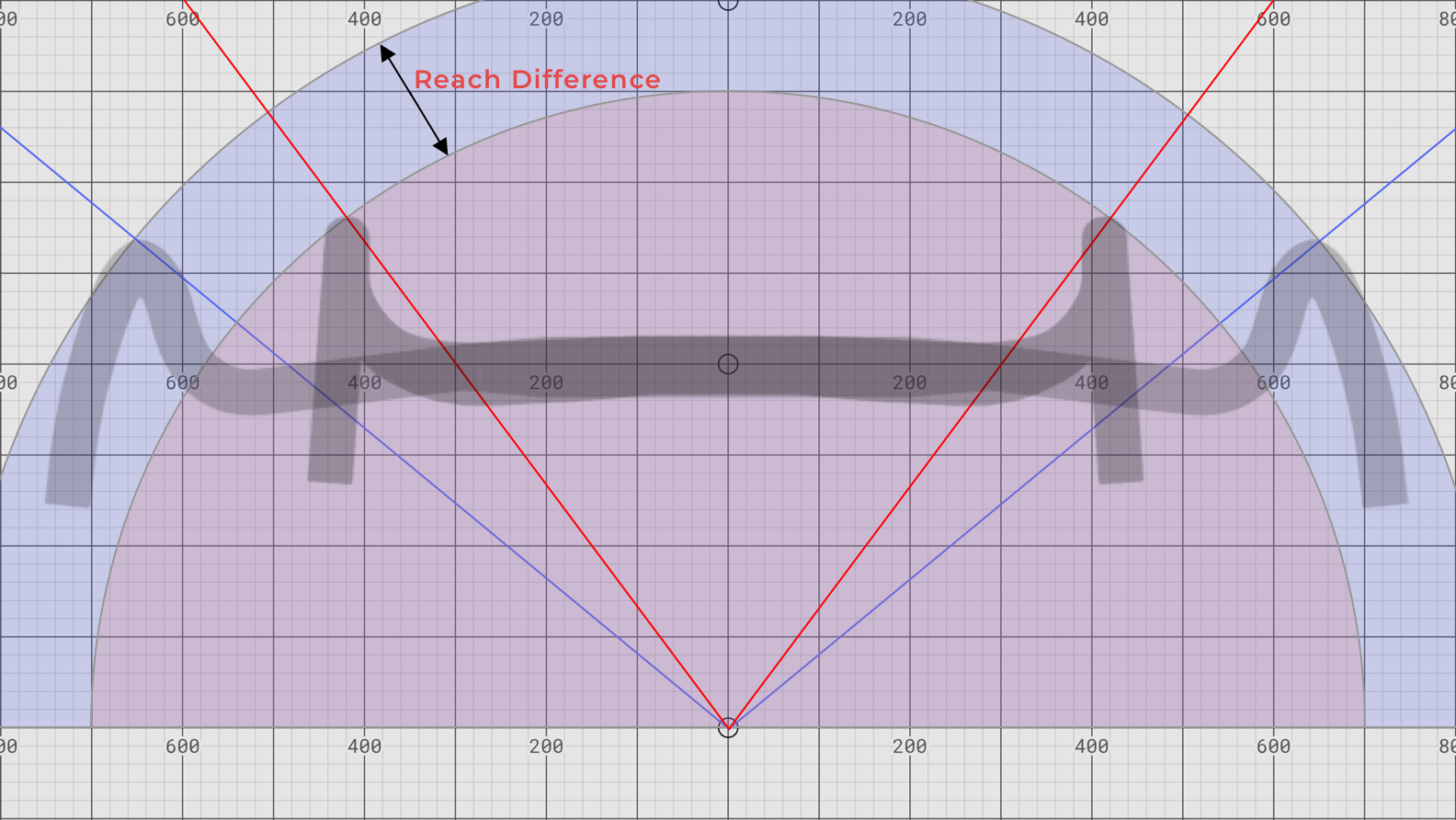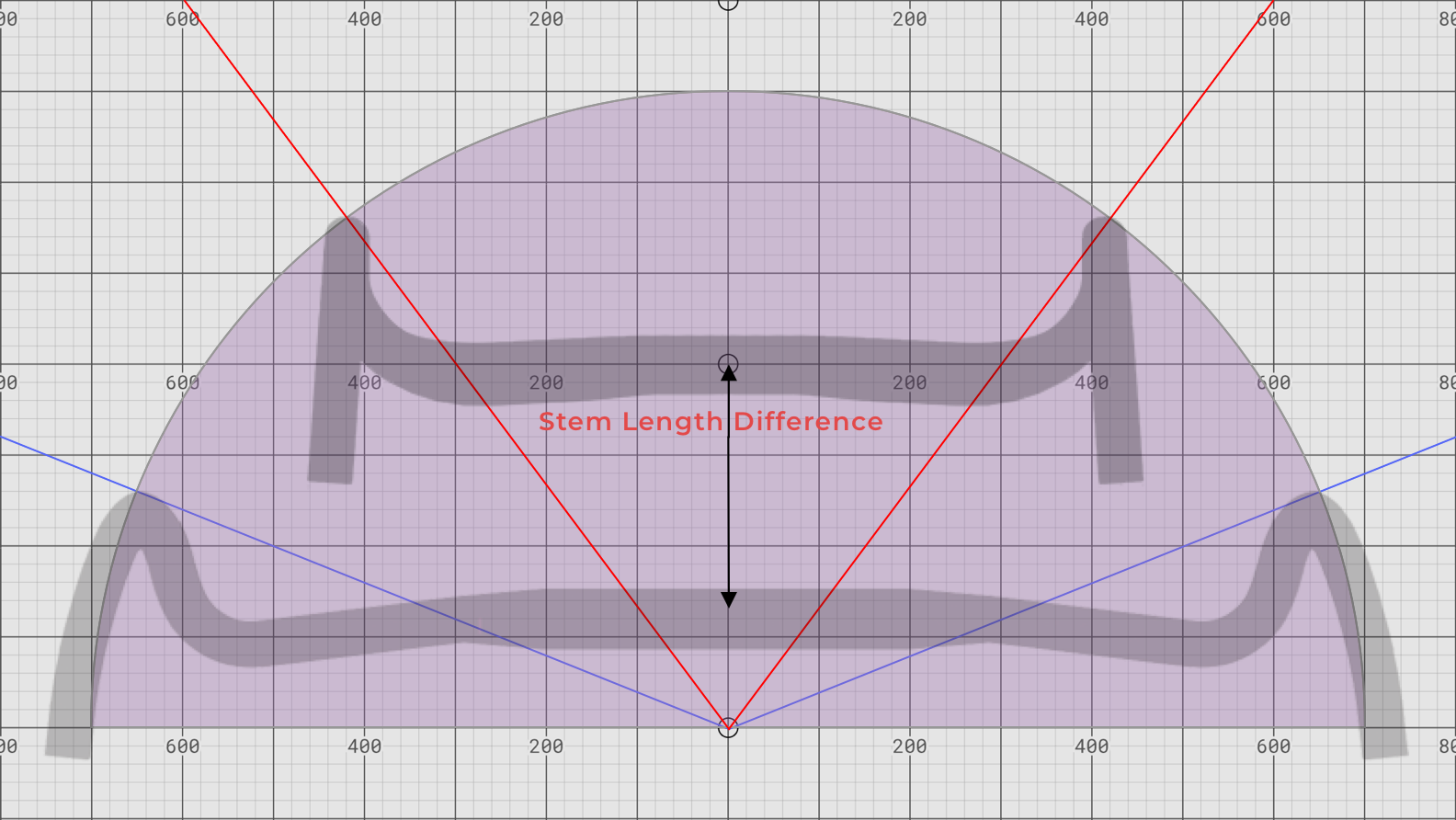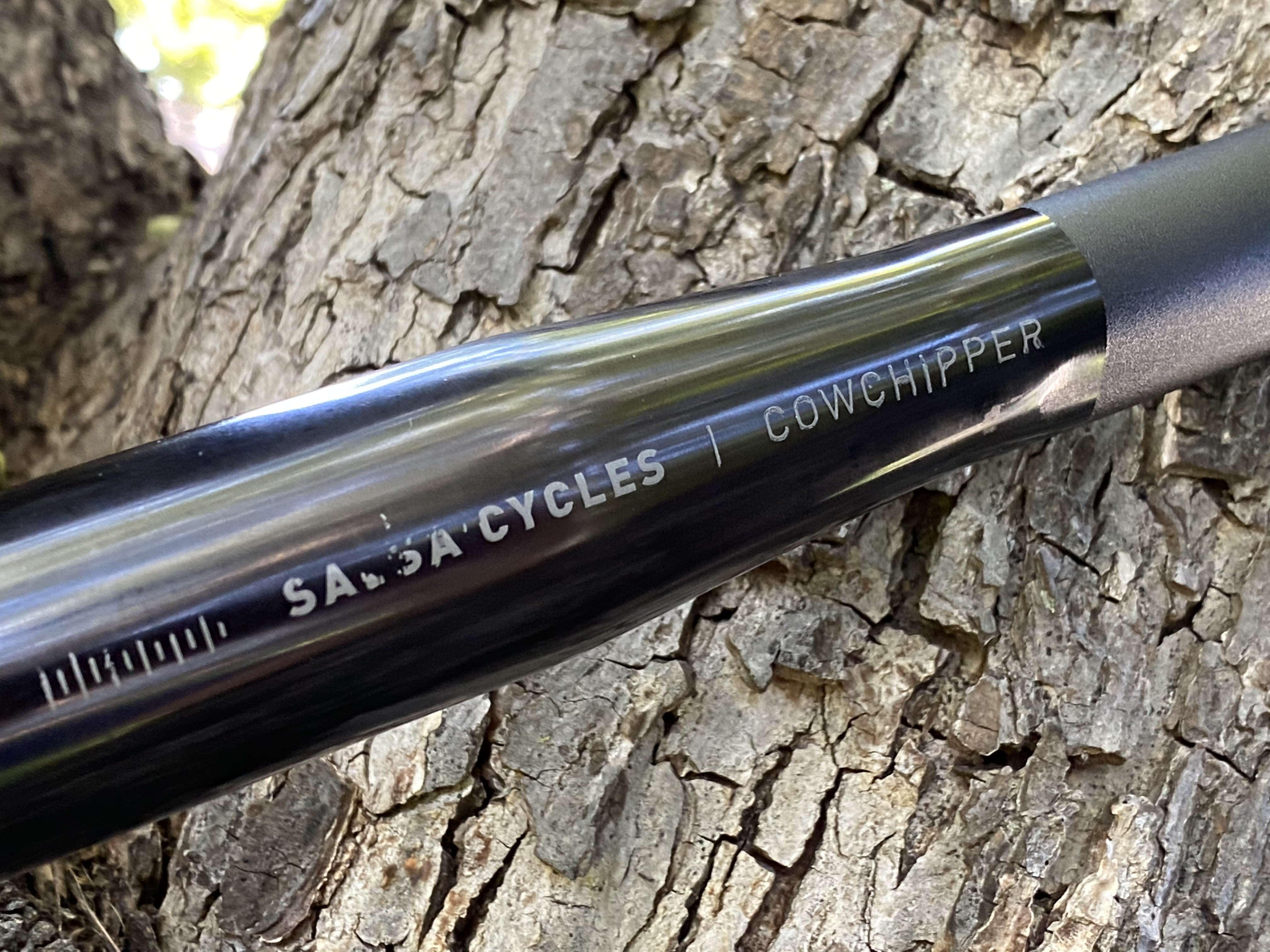For the past few years, gravel riding has seen a huge surge in popularity. So much so that various companies have rushed out all sorts of gravel-specific bikes and components. That includes a variety of handlebars, some of which are described as being designed specifically for gravel riding. Typical features of gravel-specific handlebars include wider-than-normal widths, shorter reach, and flared drops. It’s a type of bar that has received a lot of attention, both good and bad.
The impact that this class of handlebar has on a bike is significant and not without some pros and cons. As such, because of their design, you really have to dig in and know what your goals are to better understand whether they’ll be a good fit for your style of riding. Let’s look at a few points that will aid in your decision as well as dispel some of the myths surrounding gravel handlebars.
Gravel Handlebars Aren’t Good for Racing
The ire of gravel handlebars is perhaps the impetus for writing this article. Some people either really hate gravel handlebars or simpler don’t get them. Which is understandable from a certain point of view. Riders who enjoy the competitive side of things and like to race tend to be pretty critical of wider gravel handlebars...which is fair when you consider the goals of this type of rider. Simply put: If speed is what you’re after then gravel handlebars will likely disappoint you.
As many have pointed out, flared handlebars have a negative impact on the aerodynamics of the rider. Riding in the drops of a flared bar requires riding with a more wider stance, which compromises the typical aero stance one would have while riding on a more typical road handlebar with little to no flare. Plus, most gravel handlebars have a more compact drop. End result is a stance that is a bit more upright with elbows out due to the hand position required by the flared drops. This causes more air drag that results in a loss in speed, especially on downhill runs.
So, yeah...flared handlebars aren’t exactly a great recipe for speed. So, if they’re not good for racing, what are they good for?
Gravel Handlebars Are Great for Non-Competitive Rides
If you’re a non-competitive cyclist then a gravel-oriented set of handlebars might be of interest to you. And not just gravel riding either. The same style of bars are also good for bike packing, touring, and/or just about any long bike ride. These are rides that are less about speed and more about the overall experience.
Even when you’re bombing down a big gravel hill you’re less likely to worry about how fast you’re going. Your focus is more on the overall joy of just riding downhill at a higher than normal rate of speed. It’s not about winning races. It’s just about being in the moment. As such, handlebars that fit your style of riding can add so much to the experience, which could very well be a set of gravel handlebars.
I remember the first time I dive bombed down a big gravel hill. I picked up some pretty good speed; probably going around 20 to 22 mph which, for me, is pretty damn fast to be going down a gravel road. Now, I’ve gone down big gravel hills before. Just not at that speed. The difference was that I was riding on a handlebar with a good amount of flare and outsweep. It not only felt more stable but also more comfortable. It made me feel more in control over the road ahead of me, which is precisely the point of gravel handlebars.
Gravel Handlebars Are All About Comfort and Stability
The effect of wider handlebars, especially ones with some flare to them, is one that can lead to more comfort and stability on the bike. Riding on a bar like this requires that you open your arms and shoulders. This defers from a more traditional position where the rider’s arms are closer to the body in a more aero stance. Granted, the degree of this effect largely depends on the width and design of the bar itself. Regardless, depending on the rider’s physique and comfort level, this position can be far more comfortable for long rides, especially on tougher gravel terrain.
The concept of wider dropbar handlebars basically is an attempt to borrow ideas from mountain bike handlebars. Wider bars are used on mountain bikes in order to give the rider more stability and control. The same effect happens with wider dropbars as well. A wider bar smooths out handling, especially on bikes that have a steeper headtube angle. Plus, a wider stance with elbows out is a more stable position than one where elbows are closer to the body. Adding some flare to the drops enhances this effect, making riding in the drops even more stable.
You could say that gravel handlebars are a cross between a standard road handlebar and a mountain bike handlebar. Basically, the width and stability of a mountain bike handlebar with the versatility of a road handlebar. Unlike the straight handlebars on mountain bikes, a gravel handlebar offers more hand positions, which leads to far more comfort on longer rides.
Wider Bars Add More Comfort and Control...To A Point
While widening a handlebar can definitely smooth out handling and add more control for the rider, there are limits to how wide one can go before the benefits start to disappear. Much of this depends on both the rider and the bike setup.
With any handlebar, regardless of whether it’s a mountain bike or road handlebar, widening the bar causes an increase in the reach. The wider the bar, the farther a rider has to reach to put their hands on the bar. To illustrate this, take a look at the diagram below:

Using the WhatBars.com website, a more traditional dropbar like the Zipp SL-70 Ergo is overlapped with one of the widest gravel handlebars out there, the Curve Walmer. As you can see, the Walmer is a LOT wider than the Zipp, 750mm vs 440mm to be exact.
To give you an idea of the impact this bar has on the overall reach, let’s add some overlapping arches so you can see just how much distance is added with the wider Walmer bar:

Using the curve of the bar where hoods are attached, the arches show just how much reach is added when the bar width increases. Now, this is perhaps the most extreme example there is. What’s interesting is that if you look at the Walmer profile, you’ll notice that it has a bit of backsweep added to the bar. Even with that backsweep, it appears there is anywhere between 80-100mm added to the reach. That’s insane!
The only way to compensate for the increased width of a handlebar is to change the setup of the bike. While there are a few ways to do this, the easiest way to do that is to shorten the stem. Depending on the bar, you might also want to change the degree of the stem as well. Using the Stem Comparison Tool can help give you an idea of the impact a different stem would have on your bike compared to the one you already have. Dialing this in can be a bit hit and miss so consider asking your local bike shop if they have any loaner stems you can use to find the right length and angle.
Keep in mind that improving the reach can help, it still doesn’t change the impact it has on your stance. There is such thing as going too wide. A much wider bar can put more stress on your shoulders. Over long distances this can create a lot of fatigue and lead to unexpected burnout and soreness.
With an extremely wide handlebar, even a shorter stem can’t bring the handlebar back far enough to match the reach of a shorter bar. The Walmer for instance would require a stem that’s at least 100mm shorter...which realistically would make the Walmer unusable anyways since doing so would require one’s arms to be splayed out in a very unnatural manner:

Super wide bars like the Walmer will increase the reach and requires that you lean more forward into the bar with a much wider stance. So, unless you’re sure you have the upper-body strength and endurance to handle a really long bar, consider keeping the width to a minimum. Stick with a width that’s comfortable and gives you good positioning for your arms and hands on the bar. Otherwise, you run the risk of tiring your upper body like nobody’s business.
Angled Hoods Can Feel More Comfortable
Speaking of hands, let’s talk a little about the positioning of the hoods. One of the most distinguishing features of gravel handlebars is the angled-in hoods, which is required due to the flare of the drops. The angling of the hoods allows the rider to appropriately reach the brake levers while in the drops. At the same time, it also allows the hands to rest on the hoods in a way that many might find to be more natural. Because the bar is wider, your stance will be wider as well. As such, your hands will naturally twist in as your arms and elbows go out. That’s why angled-in hoods feel more natural on a wider bar.
Because it’s the most used position on a road bike, many will argue that this isn’t a natural position...which is fine. Not everyone will think riding on angled hoods is comfortable...which is especially true for those who ride competitively. Those coming from the mountain bike world though will likely find this position to be rather natural.
After riding with angled hoods for a while, I personally tried to go back to a bar with more upright hoods and just found them to be really uncomfortable. Keeping my elbows closer to my body just doesn’t feel nature anymore. In fact, I went the opposite approach and switched to a bar that had a bit more flare and thus more angling of the hoods. I like to ride with my arms in a more relaxed position so, yeah, a bit wider bar with angled hoods works for me.
Go With What Is Comfortable To You
In the end, when it comes to any handlebars, whether their gravel-specific or not really doesn’t matter. The best gravel handlebar is always the same: it’s the one that’s most comfortable to you and fits your style of riding. If you’re more comfortable riding with a mountain bike style bar then ride with that. If you prefer more of a traditional road bike handlebar with little to no flare then ride with that.
However, don’t be afraid to experiment and try out something new. As the gravel scene gets more and more popular, new designs of handlebars will continue to be released. The innovations that are resulting from the gravel trend are just starting so expect new handlebars and other products to try out. It’s gonna get interesting for sure!

Post a comment!
Comments
My shoulders are on the right and left side of my body and create a reach arc from that point.
Which human type has arms pivoting from shoulder now in the center of their chest?
I would be curious to see a human with shoulders based reach arc diagram added.
I think I understand what you're saying. And, yeah, I suppose some sort of graphical diagram would help illustrate the issues of wider handlebars.
That said, the basics are relatively simple. Imagine pushing a car off the side of a road. Would you push it with your hands out wide? Or would you keep your hands closer to the width of your shoulders? That's what I'm really getting at. The wider your hands are on the handlebar, the more stress you put on your shoulders. Trying to push something with your hands out wide is a good example of this sort of stress.
Many thanks for your writing on this, enjoyed it and learnt some things.
You bet! Thanks for reading! 👍😁